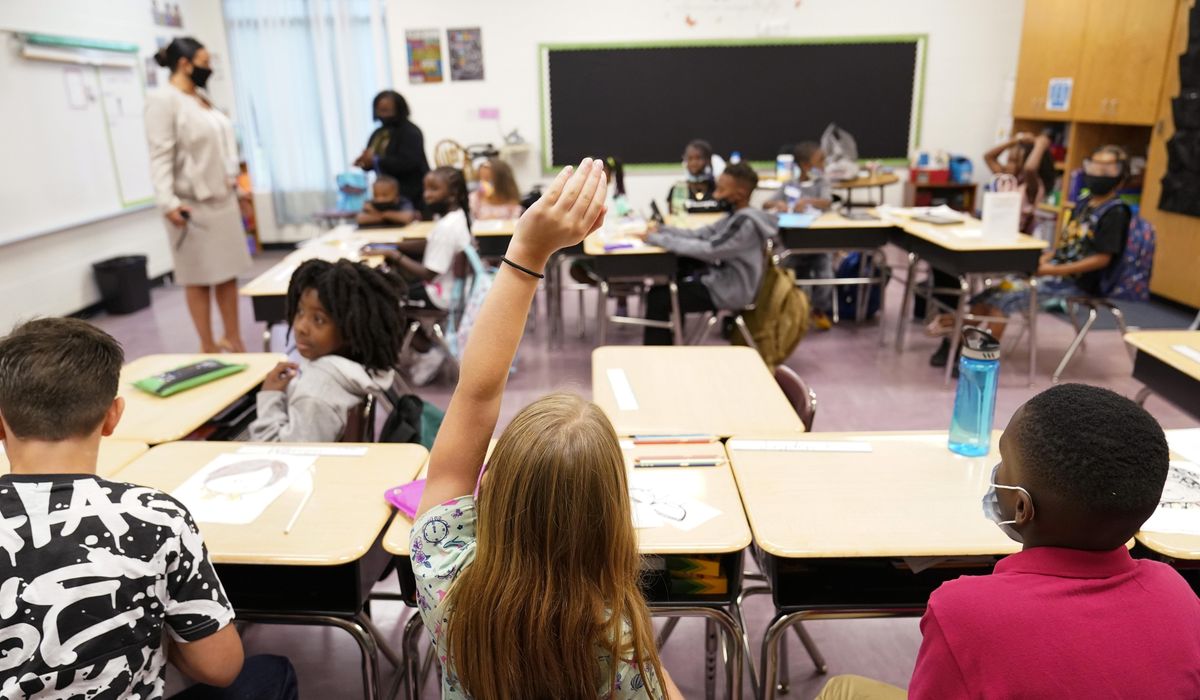


American students have fallen further behind in reading skills since the pandemic and have made little progress in math on the standardized test known as the nation’s report card.
Results released Wednesday from the National Assessment of Educational Progress, a federal exam administered in every state, found that 31% of fourth-graders and 30% of eighth-graders nationally were reading proficiently in 2024. That’s down 2 percentage points and 1 percentage point from the last exam in 2022, respectively, and a 10-point drop from 2019.
“The news is not good,” said Peggy Carr, commissioner of the National Center for Education Statistics. “We are not seeing the progress we need to regain the ground our students lost during the pandemic.”
Math scores on the exam, which the Education Department’s NCES administers every two years to a sampling of U.S. students, also lagged behind pre-pandemic levels.
Mathematics proficiency rose by 3% from 2022 to 40% of fourth-graders last year and by 2% to 28% of eighth-graders. However, math scores remained 4 percentage points lower than in 2019, and performance gaps widened.
While the top 10% of eighth-grade students increased their math scores by 3 points from 2022, the bottom 10% dropped by 6 points.
The results come as analysts have widely blamed K-12 school closures during the pandemic for historic learning losses, teacher shortages and increases in student anxiety and depression. Multiple reports show these issues hit urban and multicultural schools the hardest.
Over the past four years, the Biden Department of Education distributed billions of pandemic relief dollars to K-12 schools to hire more staff and extend virtual learning substitutes for in-person classes.
In a statement to The Washington Times, the Trump Education Department said the latest NAEP scores illustrate the failure of those policies.
“Despite the billions of dollars that the federal government invests in K-12 education annually, and the approximately $190 billion in federal pandemic funds, our education system continues to fail students across the nation,” the statement reads. “We must do better for our students.”
American Federation of Teachers President Randi Weingarten said Wednesday the NAEP report justifies increased funding in public education.
“It means securing investments for smaller class sizes, good ventilation and the tools and technology for 21st-century learning. It means fighting gun violence, and other trauma,” Ms. Weingarten said in a statement. “If we do even part of this, we will help make every public school a place where parents want to send their kids, educators want to work, and kids thrive.”
The National Council on Teacher Quality, an advocacy group, cited a need for professional development resources to help schools shore up “teacher recruitment, preparation, support, diversity, retention, and impact.”
“The latest NAEP results feel like an alarm that keeps ringing yet we keep hitting snooze,” said Heather Peske, the council’s president.
School choice advocates offered a different take. They faulted teachers’ unions for closing schools longer than necessary during the pandemic and ignoring students who fell behind during remote learning.
“The federal government gave $192 billion primarily to state agencies and school districts to turn around educational challenges resulting from Covid, and all we have to show for it four years later is a doubling of staff and a couple of points increase in math among a small percentage of students,” said Jeanne Allen, a former Reagan Education Department senior official who leads the Center for Education Reform. “It’s unconscionable.”
“These results show that many students, particularly those who were already struggling, are still not getting the support they need,” said Andrew Campanella, president and CEO of the National School Choice Awareness Foundation. “Parents care about their child’s progress and they want access to resources that will help them succeed.”
Pandemic restrictions drove millions of parents to move their children from public schools to private schools, homeschooling and other alternatives.
Education funding
Multiple news outlets reported Wednesday that President Trump was poised to sign an executive order freeing up federal education dollars for parents to spend on the schools of their choice.
“We have to stop pretending that the traditional education system is serving all our students well,” said Mackenzie Price, a self-described “frustrated mom” who has founded eight private Alpha Schools campuses in Texas and Florida since 2014. “We hope these results inspire more schools to embrace new models and approaches to achieve better outcomes.”
Traditionally low-performing Hispanic students, disadvantaged students, disabled students, and non-English speakers all experienced sharp declines in the latest NAEP reading and math scores.
Georgetown University’s Edunomics Lab noted that six states lost ground in fourth-grade reading and eighth-grade math despite receiving huge piles of pandemic stimulus money: Arizona, California, Florida, Massachusetts, Oregon and Washington.
By contrast, the lab noted that students in Kentucky, Louisiana, Mississippi, Tennessee and West Virginia saw modest score gains alongside “massive federal investments in their schools,” with Louisiana and Mississippi erasing fourth-grade learning losses.
Marguerite Roza, the Edunomics Lab’s director, said these findings confirm a growing gap between funding and test scores and suggest some states spent their money more wisely than others.
“Now that money is gone and some states have little or nothing to show for it,” Ms. Roza said. “That’s a missed opportunity that could stay with kids for the rest of their lives.”
Virginia Gentles, a parental rights advocate at the conservative Defense of Freedom Institute for Policy Studies, said the NAEP scores make it harder to claim increased funding will fix public education.
“Pouring more funding into a broken system does not magically ensure that students learn math and reading,” Ms. Gentles said. “States should respond to the NAEP results by passing and expanding education freedom programs that empower families to find an education option that meets their children’s needs.”
• Sean Salai can be reached at ssalai@washingtontimes.com.
